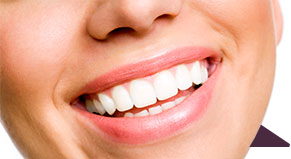
Noticing a white coating on your baby’s tongue can definitely be a cause for concern for many parents. Sometimes there’s a completely harmless reason, such as milk staining the tongue, or it can also be a symptom of newborn thrush.
In this post, we’ll examine what newborn thrush is and how you can tell if your child has it.
What is Newborn thrush?
Newborn thrush is caused by an over-abundance of yeast called Candida Albicans. This fungus normally lives in everyone’s mouth, but an overgrowth can result in an infection. The immune system usually controls this and stops illness from occurring. However, in babies, the immune system is still developing, which is why thrush in newborns is very common. In fact, the same type of infection can cause diaper rash, another common ailment on babies. Thankfully, yeast infections are usually harmless and are easily treatable.
Newborn Thrush vs Milk Coating
So how can you tell the difference between newborn thrush and milk coating?
We know that a baby’s main source of food is usually milk, which can leave a white coating in the mouth. This white coating may mirror the look of thrush on the tongue, and so it may be hard for new parents and caregivers to tell the difference.
When milk stains the tongue, it tends to be temporary, so it is always worth a look to see what your baby’s mouth looks like after a feed. Milk will wipe off easily, leaving a healthy pink tongue underneath.
Thrush, however, can result in white patches found on the tongue. It can look like cottage cheese or curdled milk, which is why it is sometimes hard to detect. These patches can be wiped away as well, but will often leave red, sore spots, and can sometimes result in bleeding. This does not always cause a baby to fuss but they may find it difficult to feed afterwards.
Preventing Newborn Thrush
Thrush in newborns is rarely serious and is easily treated. Sometimes the ailment can go away on its own, but it is always worth seeing your doctor for treatment.
Dentists suggest cleaning your baby’s mouth after each feed. You can do this with a sterile gauze or clean washcloth dipped in warm water, and then wipe away any milk residue.
Newborn thrush may look like a scary thing to new mothers, but it doesn’t have to be, as long as you know what to look for and how to differentiate between thrush and milk on the tongue. Seek appropriate treatment for both you and your baby if problems develop, but remember that thrush is a common issue that is usually harmless and easily treated.
If you have additional questions about thrush and how to prevent it, don’t be afraid to bring it up at your next dental appointment. Request an appointment with our dentists today!






 Website Powered by Sesame 24-7™
Website Powered by Sesame 24-7™